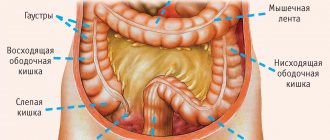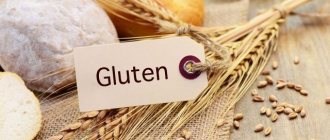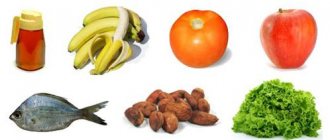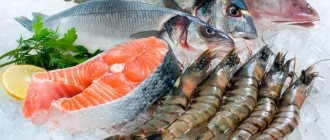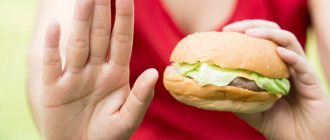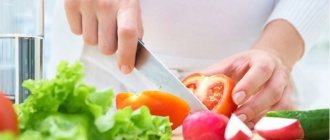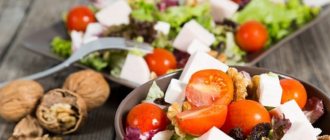Causes of thrush
The main reason for the development of candidiasis can be considered a general or local decrease in immunity when favorable conditions arise for the active proliferation of a fungal infection.
Factors contributing to the occurrence of candidal vaginitis are:
- dysbiosis caused by uncontrolled use of antibiotics;
- hypothermia;
- stress;
- poor nutrition;
- frequent viral infections;
- endocrine pathologies (diabetes mellitus, hormonal imbalances);
- pregnancy;
- violation of personal hygiene;
- taking hormonal medications and much more.
What is candidiasis (thrush)
Thrush, or candidiasis, is a fungal infection caused by yeast-like bacteria of the genus candida. These fungi are widespread in nature and are considered opportunistic. Their presence is often detected on the mucous membranes of the intestines, vagina, human skin and in the gastrointestinal tract. When certain conditions are created, for example, due to a decrease in immunity, yeast-like fungi begin to actively multiply, displacing beneficial flora.
Why do you need to eat right when you have thrush?
Controlling your diet in order to speed up the recovery process and prevent a new outbreak of the disease is the task of every woman who is faced with the problem of candidiasis. The fact is that when treating thrush, it is extremely necessary to strengthen the immune system by consuming foods rich in vitamins C and B, and omega acids.
The antifungal activity of the body is also important, aimed against the proliferation of Candida colonies that cause thrush. The already global role of fiber and dietary fiber, which normalizes intestinal function, is increasing. To combat yeast-like fungus, you will need the antibacterial properties of natural fermented milk products, which will enrich the microflora with beneficial bacteria. It is also worth making sure that low-calorie foods and dishes are a priority.
Nutritional nature
Over the course of 3-4 months, meals should become more frequent and smaller: it is advisable to eat small portions of food every 2-3 hours. The chronic form of thrush requires constant adherence to a diet to prevent relapse of the disease.
In addition to eliminating bread, sweets and other unhealthy foods from your diet, for chronic thrush you should adhere to the following recommendations:
- Give preference to gentle cooking methods.
- Eat foods that boost your immune system.
- You can consume apple cider vinegar in moderation, either in dishes or simply adding it to water. It is important to remember that increased acidity also causes rapid development of candida, so the acid-base balance must remain in balance.
- Drink enough clean water - this helps eliminate toxins.
In fact, following a diet for candidiasis is the main condition for success; ideally, you need to adhere to its principles constantly. Proper nutrition significantly reduces the risk of developing the disease and serves as an excellent prevention.
During the treatment of the disease, foods that provoke the growth of yeast should be excluded from the diet:
- sweets, especially those based on sugar and honey;
- baked goods, muffins and white bread;
- white rice, pasta, potatoes;
- hot seasonings, sauces, mayonnaise, ketchup;
- marinades, vinegar;
- smoked meats, pickles;
- kvass;
- aged varieties of cheeses, hard cheeses, blue cheeses;
- fast food and semi-finished products;
- alcohol.
and nutritional supplements:
- stewed and fresh vegetables;
- eggs;
- lean steamed meats and fish;
- cereals (buckwheat, oats, brown rice, pearl barley, barley);
- greens (dill, cilantro, parsley, onion, celery);
- unsweetened fruits and berries, citrus fruits;
- fermented milk products (yogurt without additives, kefir, fermented baked milk, yogurt, bifidok);
- natural juices (apple, carrot, grapefruit, orange, pomegranate and others);
- herbal teas (chamomile, sage, calendula, rose hips, plantain);
- biologically active food additives – probiotics;
- onion, garlic, red pepper;
- whole grain and wholemeal bread (if you are worried about extra pounds, look at the calorie content of the bread).
In addition, you should not forget about the need to drink enough water during the day, this will prevent constipation, which is extremely undesirable with a fungal infection.
Regularity of meals and adherence to a diet are also of great importance both during the period of drug treatment and after recovery.
| Diet menu for thrush | ||
| Day of the week | Eating | Dishes and products |
| 1st day | Breakfast | Dairy-free oatmeal with added butter and apple, tea. |
| Lunch | 1 glass of fermented baked milk | |
| Dinner | Fresh cabbage soup, boiled chicken breast, buckwheat porridge with water, fresh vegetable salad, pomegranate juice. | |
| Afternoon snack | Orange | |
| Dinner | Fish cutlets, mashed potatoes, herbal tea. | |
| 2nd day | Breakfast | Milk millet porridge, tea |
| Lunch | Cream cheese crisps, apple juice | |
| Dinner | Pea soup, boiled beef, stewed vegetables, fruit salad, green tea. | |
| Afternoon snack | Yogurt without sugar | |
| Dinner | Steamed omelette, vegetable salad, chamomile tea | |
| 3rd day | Breakfast | Cheesecakes with sour cream, tea with lemon |
| Lunch | Crackers, carrot juice | |
| Dinner | Cauliflower soup, steamed fish fillet, brown rice, vinaigrette, tea | |
| Afternoon snack | 1 green apple. | |
| Dinner | Fresh vegetable salad, steamed cutlets, rosehip tea | |
| 4th day | Breakfast | Barley porridge with milk and butter, chicory |
| Lunch | Berry jelly | |
| Dinner | Pumpkin puree soup, salmon steak, vegetable salad, pomegranate juice | |
| Afternoon snack | Curdled milk, rye bread | |
| Dinner | Cottage cheese casserole, lingonberry compote | |
| 5th day | Breakfast | Low-fat cottage cheese with berries, tea with lemon |
| Lunch | A glass of kefir | |
| Dinner | Fish soup, vegetable stew with turkey, cranberry juice | |
| Afternoon snack | 1 grapefruit | |
| Dinner | Vegetable salad, boiled egg, herbal tea | |
The proposed nutrition for thrush in women can speed up the recovery process and reduce the severity of painful manifestations. However, we should not forget that the simultaneous use of drug treatment, diet and a set of preventive measures is most effective.
How to prevent thrush
Prevention of thrush:
- strengthening the immune system;
- maintaining a healthy lifestyle;
- elimination of unfavorable factors and bad habits;
- use of medicinal substances only as prescribed by a doctor;
- timely treatment of chronic inflammatory diseases of the gynecological area;
- compliance with the rules of intimate hygiene;
- wearing comfortable underwear made from natural materials.
To prevent relapses of the disease, it is necessary to follow all medical recommendations for prevention and adhere to the principles of proper nutrition, regardless of the presence of clinical manifestations of the disease.
Thrush is an insidious disease that can make itself known at any time, returning again with reduced immunity and exposure to adverse factors.
| Author of the article: Obstetrician-gynecologist, Barnaul, Natalya B. |
The treatment of any disease involves taking medications and following a diet.
Women experiencing candidiasis should limit themselves to certain foods in order to quickly relieve unpleasant symptoms. A special diet will help prevent relapses of thrush.
Basic principles
When following a special diet, you need to take into account the recommendations of doctors:
- You should drink at least 1.5 liters of water per day.
- Your daily diet should include foods high in fiber.
- Bakery and pasta products should only be made from durum wheat.
- Fermented milk products, lean meat/fish, fruits, and vegetables should be eaten every day.
- The amount of nuts, oils, and fats consumed should be limited.
What can you eat
The list of permitted products should be replenished:
- garlic;
- lemons;
- cranberries;
- vegetables (fresh);
- sunflower/olive oils;
- lingonberries;
- turkey;
- chicken;
- fish;
- cabbage;
- parsley;
- sour cream;
- persimmon;
- curdled milk;
- avocado, etc.
The following should be added to the list of prohibited products:
- any sweets;
- yeast baked goods;
- alcoholic drinks;
- sweet soda;
- marinades, sauces;
- yoghurts with fillings;
- blue cheeses.
Women with candidiasis are advised to eat often, in small portions. Patients can create their own diet or use a ready-made menu compiled by specialists.
Monday
- Apple, oatmeal, dried fruit compote.
- Natural yogurt.
- Vegetable soup, stewed fish, cucumber salad, tea.
- Protein omelet, apple.
- Low-fat cottage cheese, orange, boiled chicken.
- Curdled milk.
Tuesday
- Cabbage salad, buckwheat porridge, lemon tea.
- Apple, oatmeal.
- Cucumber salad, boiled turkey, dried fruit compote.
- Peach, cottage cheese.
- Vegetable salad, baked rabbit.
- Kefir.
- Cottage cheese casserole, grapefruit juice.
- Carrot salad, cottage cheese.
- Rice soup, baked fish, buckwheat porridge, orange juice.
- Boiled cabbage (cauliflower), tea.
- Fresh vegetable salad, baked fish.
- Kefir.
Thursday
- Pumpkin porridge, grapefruit, tea.
- Yogurt, apple.
- Chicken salad with spinach, baked potatoes, orange juice.
- Avocado, cottage cheese.
- Baked beans, cabbage casserole.
- Curdled milk.
Friday
- Cheese pancakes, yogurt, tea with lemon.
- Orange, biscuits.
- Vegetable soup, fish. Apple juice.
- Hercules flakes, yogurt.
- Vegetable salad, stewed chicken breast.
- Cottage cheese.
Saturday
- Millet porridge, yogurt.
- Persimmon. Cottage cheese.
- Baked fish, stewed vegetables. Tea.
- Apple.
- Steamed fish cutlets, stewed cabbage.
- Yogurt.
Sunday
- Baked apples with cottage cheese. Orange juice.
- Curdled milk. Biscuit cookies.
- Vegetable okroshka with kefir. Baked potato.
- Protein omelet, persimmon.
- Steamed chicken cutlets, rice porridge. Tea with a slice of lemon.
- Cottage cheese.
Diet for thrush during its treatment
Drug therapy for candidiasis can only be prescribed by a gynecologist after the necessary research.
In addition to the main treatment of the disease, a special diet for thrush in women plays an important role, strict adherence to which significantly speeds up recovery and prevents complications and relapses.
A properly selected diet for thrush helps restore normal microflora of the intestines and vagina.
The effectiveness of treatment largely depends on what the patient eats. Candida is known to thrive in sweet, carbohydrate-rich environments. What a person eats is not the cause of the appearance and growth of the fungus, but under the influence of favorable conditions it can become a provocateur of its appearance. For effective treatment with medications, you need to adjust your diet.
First of all, you need to eat regularly, and the food itself should be varied. Since the disease develops against a background of weakened immunity, it is necessary to include foods rich in vitamins and microelements in the diet. For any form of thrush, the consumption of sugar and foods containing yeast is prohibited.
The main rule of the diet is a balanced, proper diet, taking into account the calorie content of foods and maximum fortification of dishes.
When heat treated, products can be steamed or boiled, or, in extreme cases, baked or stewed, but frying is completely excluded.
A glass of clean still water, drunk between meals, will help reduce the calorie content of dishes. However, you should not drink water during meals.
The menu should be thought out in advance so that you don’t eat the same foods every day. Moreover, you will have to stick to the diet for a long time - from 3 to 12 months. At the same time, it will provide benefits not only during the fight against Candida, but will also prevent relapses of the disease.
Fasting days can be used, but there is no need to use them frequently during treatment - the body must receive a sufficient amount of necessary micro- and macroelements, vitamins, and protein.
These rules include a diet for thrush in women and children. A diet for candidiasis in men implies, in addition to all of the above, a complete abstinence from any type of alcoholic beverages.
In addition, there is a list of products that clearly outlines what can be eaten and what is prohibited.
On a note
In the process of following nutritional rules, an irresistible craving for sweets often arises, especially in the first days of treatment. If you don’t have the strength to fight this desire, you can treat yourself to fresh fruit juice or prepare a light dessert by adding a sugar substitute. Sweeteners have lower nutritional value and do not actively provoke the growth of fungus, although you should not get carried away with them.
In the summer, it is recommended to replace sweets with berries, garden apples and pears. You can prepare a lot of healthy and tasty dishes from them without harming your health.
In the second phase of treatment, having achieved certain results, it is permissible to slightly expand the range of products, gradually including foods high in carbohydrates in the diet. But even with the slightest deterioration in health, it is necessary to return to a strict diet and follow it further. It is better not to consume treats at all until complete recovery, since they serve as the main food for yeast-like fungi.
On the other hand, you should not follow a diet fanatically. The speed of health restoration is influenced not only by the correct selection of foods, but also by a balanced diet. The diet must contain all the necessary vitamins and microelements.
A diet for oral thrush often helps to overcome an uncomplicated disease at the beginning of its formation. However, with advanced pathology, changes in nutrition are not enough. Complex therapy with the use of antifungal drugs and immunostimulants is required.
Source: www.omolochnice.ru
Foods that are undesirable to eat if you have thrush
Unfortunately, with candidiasis, many of the usual and favorite products must certainly be included in the stop list. First of all, this concerns excessive consumption of sweets. This ban is generally associated with the negative impact of simple carbohydrates on a woman’s health, especially if there is a problem such as metabolic disorders.
You will have to give up fast food too; semi-finished products; canned food (including fish); delicacies and smoked meats; food containing yeast among its ingredients; carbonated drinks and factory-made juices. It is better not to eat anything that takes a long time to digest, such as legumes. Even nuts – cashews and peanuts – are considered harmful due to the possible presence of mold in them.
It is also worth excluding products that contain various chemical additives: preservatives, flavor enhancers, dyes, artificial flavors, as these substances reduce immunity, negatively affect the functioning of the gastrointestinal tract and can cause allergies.
A truly prohibited product is alcohol (strong drinks and wine), the use of which can provoke a recurrence of thrush. This is due to the high content of carbohydrates and yeast in it.
So, the restrictions include:
- chocolate, sweets, pastries and cakes, ice cream;
- sweet fruits (grapes, bananas, tangerines), melon, watermelon, jam, honey, syrups;
- dried fruits: raisins, figs, dates, lesson, dried apricots;
- mushrooms;
- blue cheese;
- sour cream;
- flour, white bread, pastries;
- white polished rice;
- semolina;
- beans;
- sweet potatoes, corn;
- peas, lentils;
- pumpkin, zucchini;
- boiled red beets, boiled carrots;
- parsnip, radish, white radish;
- avocado;
- peanuts, cashews;
- mayonnaise, ketchup, mustard, vinegar, soy sauce, horseradish;
- pickles, canned cucumbers and tomatoes;
- rapeseed, peanut, corn oil;
- animal fats;
- pork, duck;
- beer, kvass
Strictly prohibited
The effectiveness of therapy for oral candidiasis depends not only on the medications prescribed by the doctor, but also on careful adherence to nutritional rules, especially at the onset of the disease. During treatment you will have to forget about many delicious and favorite dishes. So, what foods should you not eat if you have thrush?
Sweets
Strictly prohibited:
- honey;
- juices;
- chocolate, sweets;
- glucose, sorbitol, lactose, fructose and other sugar substitutes;
- sweet drinks;
- jam, jam, maple syrup;
- ice cream:
- baked goods (gingerbreads, waffles).
Treats create ideal conditions for the reproduction and growth of Candida albicans, so the diet completely excludes sugar from the diet.
Food containing yeast or mold
All products containing mycelium in any form or obtained as a result of fermentation should be removed from the diet:
- spicy and sour dishes with a high content of vinegar, with the exception of natural apple vinegar (sauerkraut, homemade preparations, pickles);
- Forest mushrooms;
- beer, kvass, cider, alcoholic drinks;
- old dried fruits covered with mold spores;
- sprouted cereal grains;
- smoked meats (meat, fish), sausage and corned beef;
- store-bought products containing monosodium glutamate;
- kombucha drink;
- blue cheeses.
If you are hypersensitive to yeast, it is not recommended to take B vitamins, antibiotics, selenium and other yeast-based medications.
Having initially excluded these dishes from the diet, you can gradually introduce them into food in the second phase of treatment. If there is no negative reaction, the product can be left in the diet.
Cereals
The diet for oral candidiasis involves avoiding bread and other baked goods (pies, buns, gingerbread cookies, loaves). The high content of carbohydrates and yeast makes them extremely harmful. Almost all baked goods contain large amounts of sugar and are made from refined flour.
In addition, canned, frozen and ready-made store-bought meals contain large amounts of sugar and flour. They also need to be excluded from the diet.
Milk
As you know, milk contains natural sugar - lactose. Therefore, milk is unacceptable for oral candidiasis. The exception is fermented milk products, but they must be “live”. Only natural yoghurts, kefir and cottage cheese contain probiotics necessary to fight candidiasis. Such a diet, of course, cannot completely cure thrush. Therefore, it should be combined with taking medications prescribed by the doctor.
However, such a simple and accessible method should not be neglected, especially since the therapeutic course takes 10-14 days. For six months after illness, it is recommended to exclude foods high in sugar, baked goods and mushrooms from the diet or reduce their quantity to a minimum.
What foods exacerbate the development of Candida fungus?
There are a number of foods that should be excluded from your diet during treatment for candidiasis. This is due to the fact that when they enter the body, they create a favorable environment for the development of yeast fungi. Patients whose thrush has become chronic may notice that sometimes eating these foods provokes an exacerbation of the disease.
Sugar is something that should be excluded from the patient’s diet first of all, because it is one of the sources of nutrition for pathogenic pathogens.
If you have thrush, you should not eat foods containing sugar (for example, jam)
It is very difficult to limit yourself from all products containing sugar, but you should try to forget at least the most unhealthy ones. These include:
- Honey;
- Sweet syrups: fruit, berry, maple;
- Jam and its analogues;
- Ice cream;
- Confectionery: cakes, chocolate, candies.
Once pathogenic fungi no longer receive nutrition in the form of sugar, their viability will deteriorate significantly.
Bread and other products containing yeast contribute to the development of fungal pathogens.
This occurs due to the fact that yeast participates in the fermentation process. If you can’t completely give up flour products, you can try replacing them with bread made without yeast.
Raw materials and seasonings
This segment of food products should also be excluded from the daily diet. This includes all possible additives: vinegar, ketchup, mustard, mayonnaise, various store-bought sauces and seasonings.
It is not surprising, but it is also better to temporarily abstain from cheeses if there is candidiasis in the body.
And, of course, the diet involves avoiding fatty, heavy fried foods, be it fast food or home-cooked food. Smoked meats and mushrooms are also on the prohibited list.
Yeast fungi of the genus Candida belong to the opportunistic flora, which is present in the human body in small quantities.
If the concentration of microorganisms goes beyond the permissible norm, a disease called candidiasis or thrush develops. Treatment of this disease is carried out with antifungal drugs. Also an important condition for the success of treatment and prevention of relapses is adherence to a special diet.
The most favorite products of pathogenic flora contain high concentrations of sugar, flour or yeast (or all of these at the same time). At the same time, it will not be possible to get by with the exception of sweets alone. You also need to limit yourself in using:
- bakery and pasta products;
- alcohol and carbonated sweet drinks;
- sweet fruits and dried fruits.
With intestinal candidiasis, foods that promote the growth of Candida are completely or partially replaced by those that are harmful to it.
But in addition to sweet pastries and candies, this list also includes:
- cheeses, especially blue cheeses;
- canned fish;
- pasta, pasta;
- bread;
- potato;
- grapes, bananas, persimmons, watermelons;
- dried fruits;
- smoked meats;
- pickles and marinades;
- spicy seasonings;
- alcoholic drinks, especially kvass and beer;
- sweet carbonated drinks;
- honey, jam and other sweets;
- dishes that cause fermentation processes, such as legumes or sauerkraut.
Candida cannot be completely destroyed; it must be present in the body within normal limits, therefore, with provoking factors, candidiasis may return again, so it is better not to lift dietary restrictions even after undergoing a course of treatment.
In your daily diet, on the contrary, you need to include dishes with components that suppress the growth of pathogenic flora, namely:
- onion and garlic;
- parsley, cilantro, dill;
- blueberries, lingonberries, cranberries, sea buckthorn and fruit drinks made from them;
- pumpkin, cabbage, cucumbers, zucchini;
- vegetable oils: black cumin, flaxseed, olive;
- nuts and seeds;
- lean meats;
- cereals;
- legumes - provided that they do not cause excessive signs of fermentation in the patient;
- unleavened bread or wholemeal bread;
- seafood;
- natural yoghurts, kefir;
- chicory coffee;
- at least 1.5 liters of clean water.
Menu for the week
When switching to a new type of diet, it is best to make a rough list of dishes for the next few days; this will discipline you and stop you from trying to eat something familiar and forbidden.
1. Monday
- Breakfast: oatmeal with water and berries. Chicory coffee;
- Lunch: boiled chicken fillet with vegetables and herbs, unsweetened tea;
- Afternoon snack. Yogurt or berries;
- Dinner: vegetable salad, boiled fish, green tea.
2. Tuesday
- Breakfast: buckwheat porridge with milk, unsweetened tea;
- Lunch: boiled veal with cucumber and cabbage salad, unsweetened tea or fruit drink;
- Afternoon snack. Yogurt or berries;
- Dinner: vegetable salad, boiled fish, green tea.
3. Wednesday
- Breakfast: cottage cheese casserole and a cup of chicory;
- Lunch: chicken broth soup with vegetables and steamed turkey cutlets;
- Afternoon snack: a glass of yogurt;
- Dinner. Boiled egg, boiled chicken, beet and carrot salad, unsweetened tea.
4. Thursday
5. Friday
- Breakfast: omelette with green onions and endive;
- Lunch: soup - broccoli puree with whole grain bread;
- Afternoon snack: fruit salad;
- Dinner: low-fat cottage cheese and green tea.
6. Saturday
- Breakfast: oatmeal on water with nuts and berries, green tea;
- Lunch: fish soup, steamed chum salmon with broccoli;
- Afternoon snack: low-fat cottage cheese;
- Dinner: steamed cutlets and rice with turmeric, chicory.
7. Sunday
- Breakfast: cottage cheese casserole and unsweetened black tea;
- Lunch: steamed turkey with vegetables and cucumber, green tea;
- Afternoon snack: nuts and yogurt;
- Dinner: vegetable casserole with chicken fillet, cucumber and cabbage salad, endive.
If giving up carbohydrates is not easy, you can add buckwheat or rice cakes to any of your meals, which will add a feeling of fullness, or a nut.
Why is it important to follow a diet during an exacerbation of thrush?
Following a diet for candidiasis is due to the fact that its causative agent is a living microorganism, the development of which depends on nutrition. The diet for thrush excludes the consumption of foods that contribute to the growth of the fungus. And products that have a detrimental effect on it, on the contrary, represent the basis of the diet.
Forms of thrush
Of the different subspecies of Candida, only three can provoke thrush, the most common being Candida albicans. Common signs of the disease include
- redness;
- rash;
- itching;
- formation of white plaque;
- bad breath;
- fatigue;
- headache;
- problems with the gastrointestinal tract: loose stools, flatulence.
There are several classifications of candidiasis. And depending on the characteristics of the disease, the following are distinguished:
- Candida carrier. Symptoms are not expressed; a diagnosis can only be made through analysis. In this case, pathological processes harm the patient’s health.
- An acute form with severe symptoms that requires urgent treatment.
- A chronic form that occurs due to untimely or incorrectly selected therapy.
The chronic form of the disease is divided into:
- persistent, i.e. with the presence of sluggish signs that sometimes increase and decrease
- recurrent, which is characterized by periodic outbreaks, the cause of which is most often stress or hormonal imbalances.
The most common types of candidiasis are:
- superficial, when the mucous membranes, nails or upper layer of the epidermis are affected;
- systemic, in which the process involves internal organs;
- in the form of sepsis, when the pathogen enters the bloodstream and, together with the circulating blood, passes through vital organs that cease to function normally. This form is fatal in most cases.
There are 4 main places on the human body that are favored by harmful microorganisms for residence:
- oral cavity;
- genitourinary organs;
- nails and cuticles;
- internal organs (visceral form, most often the gastrointestinal tract is affected).
Drinks for thrush
Women suffering from candidiasis should not drink alcohol. Every day, such patients need to drink clean water, kefir, teas, and herbal decoctions.
The number one drink in all diets is clean drinking water. Nutrition for thrush is no exception, because during its treatment the body tries to cleanse itself of toxins - waste products of Candida fungi. Therefore, it is advisable to drink plenty of fluids, not forgetting to strengthen the immune system. Thus, the norm of clean drinking water varies from 1.5 to 2 liters.
Natural freshly squeezed juices (including grapefruit, carrot, tomato), rosehip infusion, cranberry and lingonberry fruit drinks, which have a high content of vitamin C, are useful. It is worth including a chicory drink in your diet; infusions of hawthorn, rowan, sage, plantain, string, eucalyptus; compotes, chamomile tea.
Is it possible to drink coffee and tea? This is a pressing question for many. The answer to this is most likely in the affirmative, but with some reservations. It is permissible to consume only natural ground coffee and only a small amount per day. It is better to prefer green tea to black tea.
As mentioned above, a diet for thrush in women involves restriction not only in foods, but also in drinks. During this period the patient will have to give up:
- Alcohol in any form;
- Coffee. You can use its harmless analogue called chicory;
- Strong tea;
- Any sweet drinks. It can be juices, soda, compote;
- Drinks that undergo a fermentation process, for example, kvass.
The best solution in the process of treating thrush is to drink simple, clean drinking water. Weak tea or its green form is also allowed.
Authorized Products
Thus, the list of foods for thrush includes low-fat protein foods (meat, fish, poultry), non-starchy vegetables, seasonings, herbs and nuts.
Main courses are prepared from lean meat (chicken, beef). It is better to boil or bake it. These can be cabbage rolls, stuffed zucchini, meat casseroles with vegetables. Low-fat fish is boiled or baked with sour cream sauce.
Broccoli, Brussels sprouts, cauliflower
Non-starchy vegetables are allowed, which can be boiled, stewed, or made into vegetable cutlets. Fresh vegetables are the most valuable. In stews you need to add spices and garlic. Non-starchy vegetables include eggplant, broccoli, Brussels sprouts, Chinese cabbage, watercress, cucumbers, spinach, sorrel, celery, tomatoes, and beet tops. Moderately starchy - turnips, carrots, zucchini. Zucchini, pumpkin, potatoes, beets, squash, Jerusalem artichokes, radishes and radishes contain a large amount of starch, so it is better to exclude them.
If you eat beets, carrots and pumpkin, it is better to eat them raw, as an addition to salads. These boiled or stewed vegetables increase the sugar content, which is not desirable for thrush. Avoid potatoes as they are a highly starchy product, and if you still decide to eat them, soak them before cooking to remove the starch. Try to add sprouted grains (barley, millet, wheat), which are immunostimulants, to salads. Sauerkraut populates the intestines with beneficial microorganisms, so it should be included in the diet.
You can use cereals as a side dish, but with restrictions, since these are sources of carbohydrates (albeit complex ones). Dairy products allowed: milk (with restrictions), natural yogurt and biokefir. In principle, all fermented milk products are useful for candidiasis, since lactic acid bacteria inhibit putrefaction and fermentation in the intestines and are natural antifungal drugs, but products with active bacteria are especially useful. Choose yoghurts from the baby food line (unsweetened, without preservatives and dyes) or prepare it yourself from live cultures. You can eat cottage cheese, as it also prevents the activity of pathogenic flora.
Replace regular bread with yeast-free bread; bake yeast-free bread from whole grain flour with bran, flax or sesame seeds.
Their drinks include a decoction of rose hips, decoctions of cranberries, lingonberries, fruit drinks made from these berries, decoctions and teas from herbs - plantain, oregano, chamomile, alfalfa. Green tea is allowed with restrictions.
Dinner is served!
The restrictions for vaginal candidiasis are the same as for any other type. Since the disease is exclusively female, the fair sex should monitor the consumption of sweets, the craving for which is always higher in women than in men.
Some of the most dangerous foods that cause a sharp increase in Candida include:
- sweets with the addition of cheap sweeteners;
- sweet carbonated drinks;
- canned food;
- semi-finished and finished products with a large number of preservatives and artificial additives.
They should be strictly avoided even by healthy people, since such nutrition is not beneficial. If you have thrush, they should be excluded completely so as not to aggravate the situation.
After the course of treatment, it is advisable to continue to adhere to the diet, since its principles are fully consistent with the concepts of healthy eating. If it is difficult to give up old eating habits, you can eat carbohydrates, but in small quantities, in moderation. You need to prepare dishes for one meal in such a way that they necessarily include foods that are dangerous for yeast fungi: for example, you can add black cumin oil and garlic to a salad, or prepare fruit drinks from sour berries.
It is important to follow a diet for candidiasis not only during the treatment period, but also for some time after it in order to avoid relapse. On average, for acute forms of thrush, the recommended time to follow the diet is up to 6 months, and for advanced and chronic forms, it is about two years.
After complete treatment, prohibited foods should be introduced gradually. The list of permitted and prohibited foods is given below.
Healthy food
When following a diet, you can eat the following foods:
- It is recommended to avoid vegetables (raw and heat-treated by stewing, baking or boiling), fried ones. It is useful to eat beets, any cabbage, carrots, cucumbers, celery, onions, sweet peppers, and zucchini. Vegetables should be on the table every day
- Lean meat and offal: turkey, beef, liver, lungs, tongue.
- Lean fish and seafood: salmon, tuna, shrimp. It is also useful to eat seaweed.
- Eggs.
- Gluten-free cereals: rice, millet, buckwheat, pearl barley, quinoa. It is useful to cook various porridges from cereals.
- Fermented milk products: cottage cheese, yogurt, kefir. They are characterized by good digestibility and promote the colonization of microflora with “good” bacteria (lactobacteria).
- Fruits and berries: avocado, grapefruit, persimmon, cranberry, black currant, sea buckthorn.
- Spices: red pepper, cinnamon, turmeric, bay leaf, garlic.
- Greens: green onions, dill, parsley.
- For drinking, you can prepare a decoction of rose hips, rowan berries, vegetable juices, and berry fruit drinks.
- Honey is allowed in small quantities.
These products contain a large amount of vitamins and microelements to saturate the body.
Below is a list of prohibited foods that should not be consumed during the treatment of candidiasis and for its prevention:
- Sugar. It is the main food of the fungus. To stop the growth and reproduction of candida, it must be eliminated 100%.
- Alcoholic drinks. They contain a huge amount of sugar, so they require exclusion for the same reason as the first product.
- Potatoes, peas, beans. They contain starch, which creates a favorable environment for fungus.
- Products containing yeast: bread, beer, kvass, baked goods.
- Hot sauces: mayonnaise, ketchup, horseradish, mustard.
- Cereals that contain gluten: barley, wheat, oats, rye.
- Milk, cheese, butter. Causes fermentation when digested.
- Vinegar (except apple vinegar) and all products or dishes to which it is added: various pickles, canned food.
- Nuts – pistachios, peanuts. May contain mold, which feeds the fungus.
- Fatty, fried and smoked foods.
- Drinks: lemonade, coffee, fruit juices, black tea.
Getting pleasure from food, turning every dish into a tasty medicine - this is the principle of culinary tasks and experiments during the treatment of thrush and consolidating its results.
Basic principles of the anti-candida diet
There is no separate treatment table as such. Recommendations are developed individually based on the principles of healthy eating.
Important details to pay attention to.
- Daily calorie intake for adults: 2200–2700.
- Diet: fractional (three main meals + the same number of snacks).
- Preferred methods of heat treatment: steaming, boiling, stewing.
These rules are classified as universal. For pregnant women, children, patients with diabetes and/or obesity, daily caloric intake is adjusted.
If the fungus lives in the mouth, special requirements are placed on the consistency of dishes: it is better to puree solid foods, finely chop vegetables for salads.

